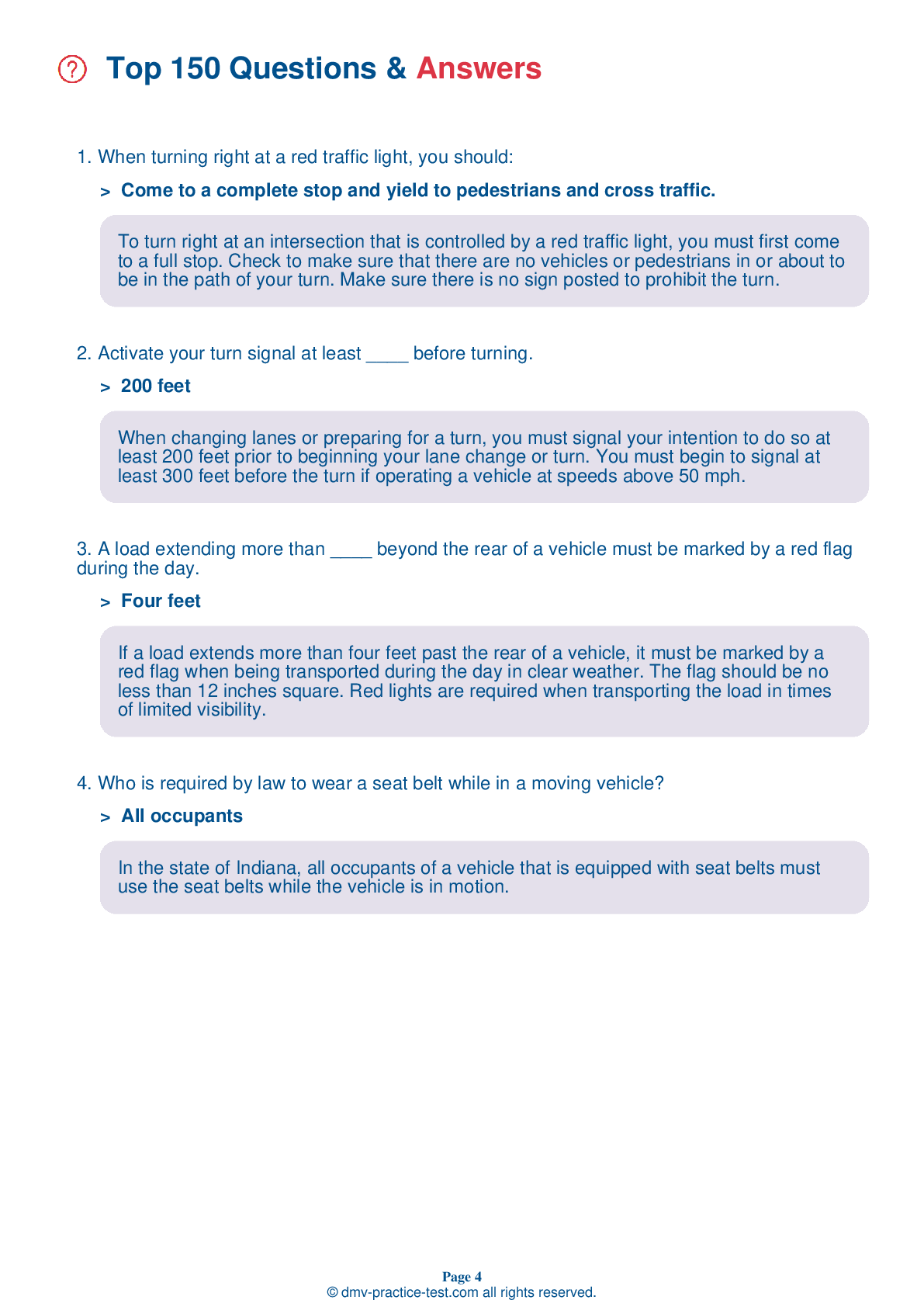FREE Indiana DMV Practice Test #9
This set of Indiana DMV practise tests has been updated for January 2026. It includes questions based on the Indiana Driver Handbook's most significant traffic signals and laws for 2026. Use actual questions that are very similar (often identical!) to the DMV driving permit test and driver's licence exam to study for the DMV driving permit test and driver's licence exam.
On the practise exam, each question gets a tip and explanation to help you remember the concepts. The written component of the official Indiana DMV test will include questions about traffic rules, traffic signs, and driving statutes, as well as information from the Driver Handbook.
To obtain a passing grade, you must correctly answer 44 of the 50 questions. Take our DMV practise exam to help you prepare for your Indiana instruction permit or driver's licence.
The DMV exam is available in several languages.
Using any kind of testing assistance will result in an automatic fail, and the DMV may take additional action against your driver's licence, so stay away from it.
1 . To prevent hydroplaning, you should:
To prevent hydroplaning, you should ensure that the tires on your vehicle have good tread depth and are inflated to the proper pressure. Reduce the speed of your vehicle when driving in the rain. Hydroplaning occurs most frequently at higher speeds.
2 . This road sign means:

This sign indicates that a steep downhill grade is ahead.
3 . If you are driving on the interstate and pass your exit, you should:
Don’t make a last-minute turn into an exit. If you pass your exit, you must go to the next one.
4 . Before passing another vehicle, you should signal:
Before passing, you should signal early enough for other drivers to know your plans in advance.
5 . A solid white line down the center of a two-lane road indicates:
White lines are used to separate traffic moving in the same direction. Solid lines indicate that drivers are not permitted to pass.
6 . This sign means:

Warning signs are usually diamond-shaped with black markings on a yellow background. They alert drivers to upcoming hazards. This sign indicates that there may be pedestrians crossing the road ahead.
7 . If an approaching train is near enough or going fast enough to be a danger, you must:
You should look and listen for trains before crossing any railroad tracks. If an approaching train is near enough or going fast enough to be a danger, you cannot go across the tracks. This is true even if they have no signals or the signals are not working.
8 . This road sign means:




